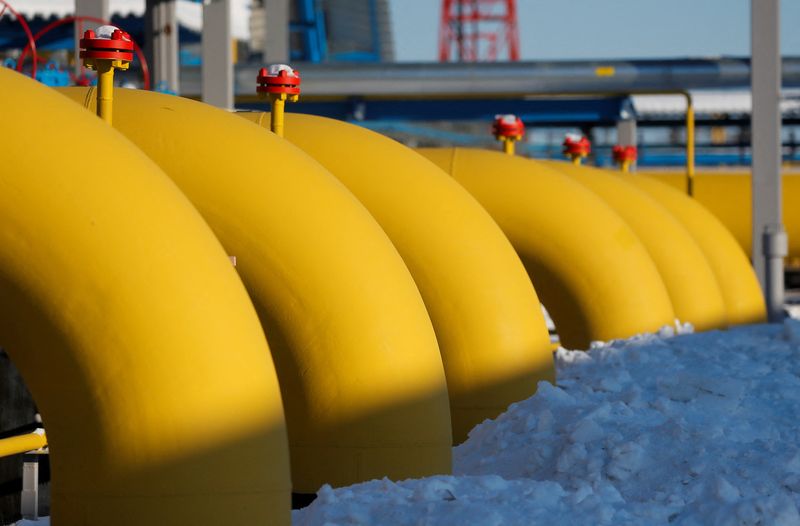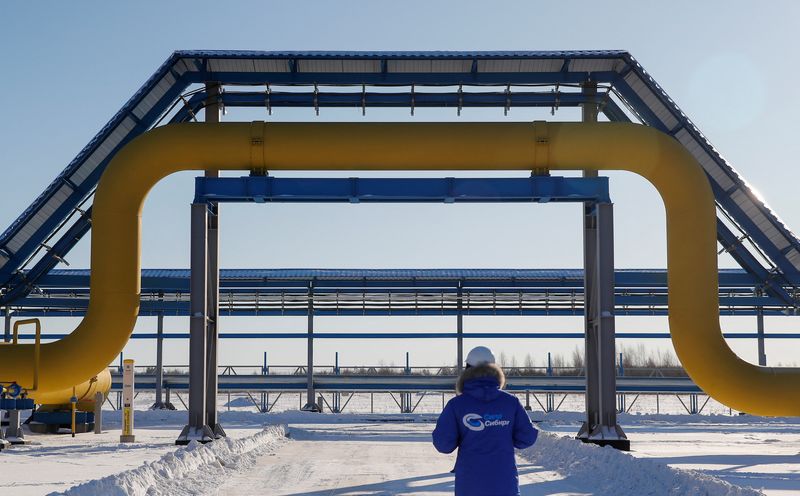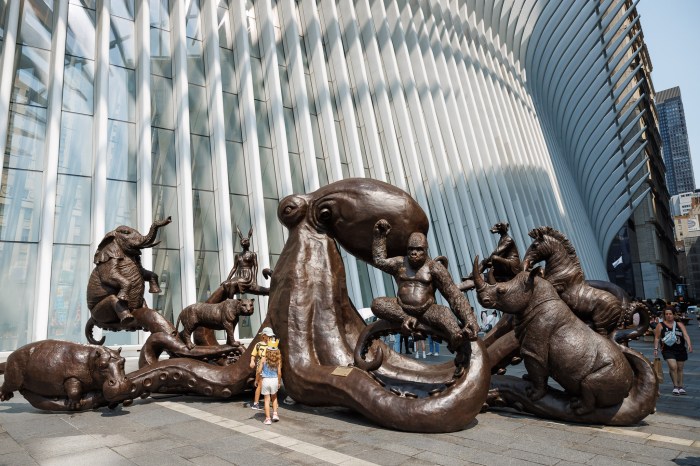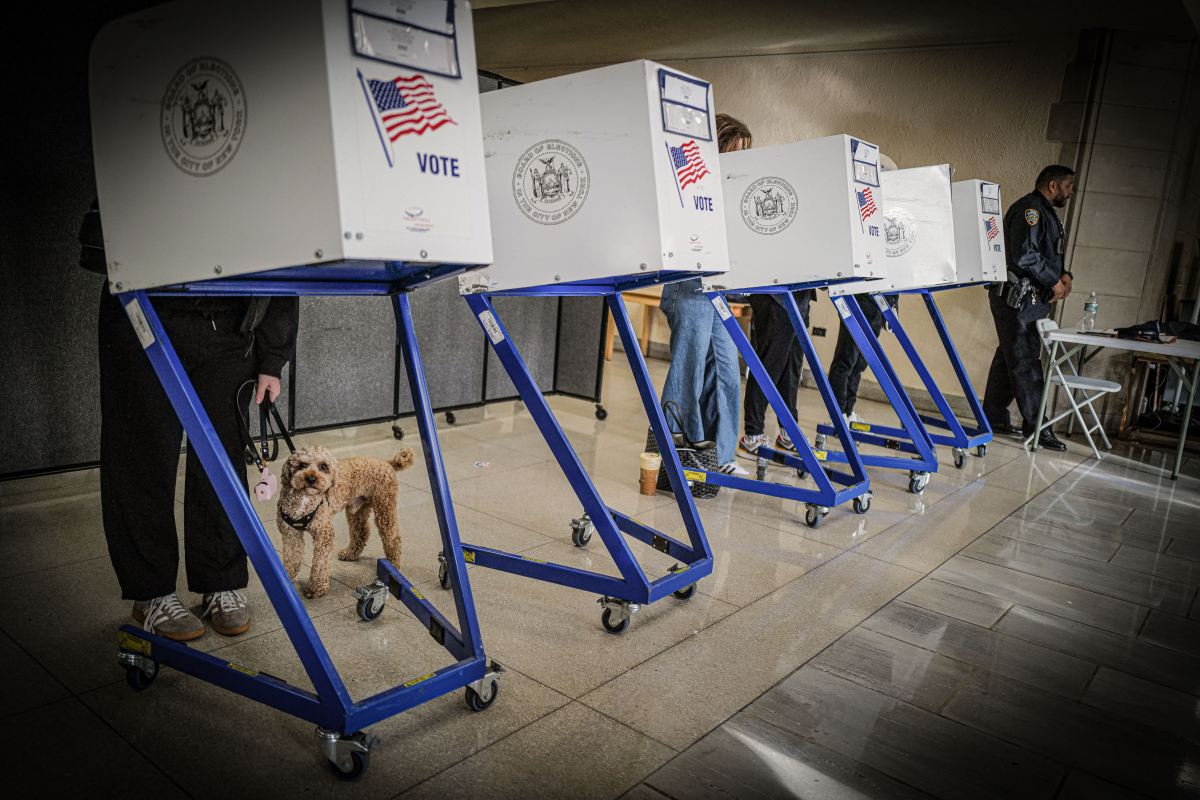(Reuters) – Russian President Vladimir Putin meets China’s leader Xi Jinping this week when he attends the Beijing Winter Olympics and they may seek to deepen trade ties in energy and other areas at a time when Moscow is at loggerheads with the West over Ukraine.
Putin and Xi could sign 15 agreements, Kremlin aide Yuri Ushakov said, adding that those deals might cover energy, which is already an area of close cooperation between oil and gas exporter Russsia and the world’s top energy consumer China.
Ushakov did not give details in his comments on Wednesday, although China may be keen to secure more gas from Russia to use as a transition fuel in its shift away from dirtier coal, which produces more greenhouse gas emissions.
“Quite a few options are under discussions for boosting Russian gas to China,” said a Beijing-based gas consultant who asked not to be named, adding that Putin might welcome any deal as he was “keen to play the China card” in Moscow’s standoff with the West.
China is Russia’s top export market after the European Union. Russian imports to China were worth $79.3 billion in 2021, with oil and gas accounting for $44.58 billion or 56%, according to China’s customs agency.
“The two nations have been establishing a mutually beneficial energy alliance,” Putin said in comments carried by China’s Xinhua news agency, saying these included oil and gas cooperation and other projects, including nuclear power.
Below are details of existing energy and other trade ties:
THE GAS BUSINESS
Russia, Beijing’s No. 3 gas supplier, exported 16.5 billion cubic metres (bcm), or about 12.07 million tonnes, of the fuel to China in 2021, meeting about 5% of Chinese demand, sent via pipeline or shipped on liquefied natural gas (LNG) tankers.
Russia’s main export route is a 4,000-km (2,500-mile) pipeline that links East Siberian fields to northeast China.
Supplies via the Power of Siberia pipeline began in 2019 and are due to rise to 38 bcm a year by 2025, up from 10.5 bcm in 2021, under a 30-year contract worth more than $400 billion.
Russia, which plans to invest $55 billion in exploration and pipelines, aims to build a second gas pipeline, Power of Siberia 2, with capacity for 50 bcm a year to run via Mongolia.
China, which overtook Japan last year as the world’s largest buyer of LNG, imported 4.53 million tonnes of LNG worth $2.78 billion from Russia in 2021, Chinese customs figures show, placing Russia behind Australia, the United States and Qatar.
Russia’s Novatek wants to rival Qatar as the world’s largest LNG producer over coming decades and Chinese firms including CNPC have invested in its Yamal LNG and Arctic LNG-2 projects.
THE OIL TRADE
Russia is China’s second biggest oil supplier after Saudi Arabia, with volumes averaging 1.59 million barrels per day last year, or 15.5% of Chinese imports.
About 40% of supplies flow via the 4,070-km (2,540-mile) East Siberia Pacific Ocean (ESPO) pipeline that was financed by Chinese loans worth an estimated $50 billion.
FOREIGN EXCHANGE COOPERATION
China and Russia both say they want to increase the global role of their currencies and reduce reliance on the U.S. dollar.
China has been using its Belt and Road Initiative to promote trade in the yuan and has signed local currency swap agreements with many participating countries, including Russia.
Russia added the yuan to a list of reserve currencies in 2015 and, as of 2021, about 13% of its international reserves were held in the Chinese currency. Russia’s total reserves now stand at $640 billion.
In 2021, Russia added the yuan to its National Wealth Fund (NWF), a part of state reserves, saying it needed to diversify its savings.
Both China and Russia have also been developing alternatives to SWIFT, the international payment network. Beijing has been encouraging the use of its homegrown alternative, known as the CIPS clearing and settlement services system. Moscow has set up its own banking messaging system, known as SPFS.
(Reporting by Chen Aizhu; Additional reporting by Andrey Ostroukh, Oksana Kobzeva and Vladimir Soldatkin; Editing by Edmund Blair)
























